

Social workers protect vulnerable populations, support families, and help people solve and cope with problems in their everyday lives, all within different settings.
Since social workers support numerous communities, work in various environments, and develop different scopes based on their licensure, creating your social worker resume to target the right job for your career goals can be challenging. (It’s also why social worker job descriptions tend to be rather vague.)
We’ve analyzed hundreds of social worker resume samples from all populations, environments, settings, and licenses to attract the attention of a hiring manager or recruiter so you can get more interviews in 2024. We created eleven resume samples to help you build an eye-catching resume and check your resume using AI-powered tips.
 example with 10 years of experience" width="800" height="1036" />
example with 10 years of experience" width="800" height="1036" />


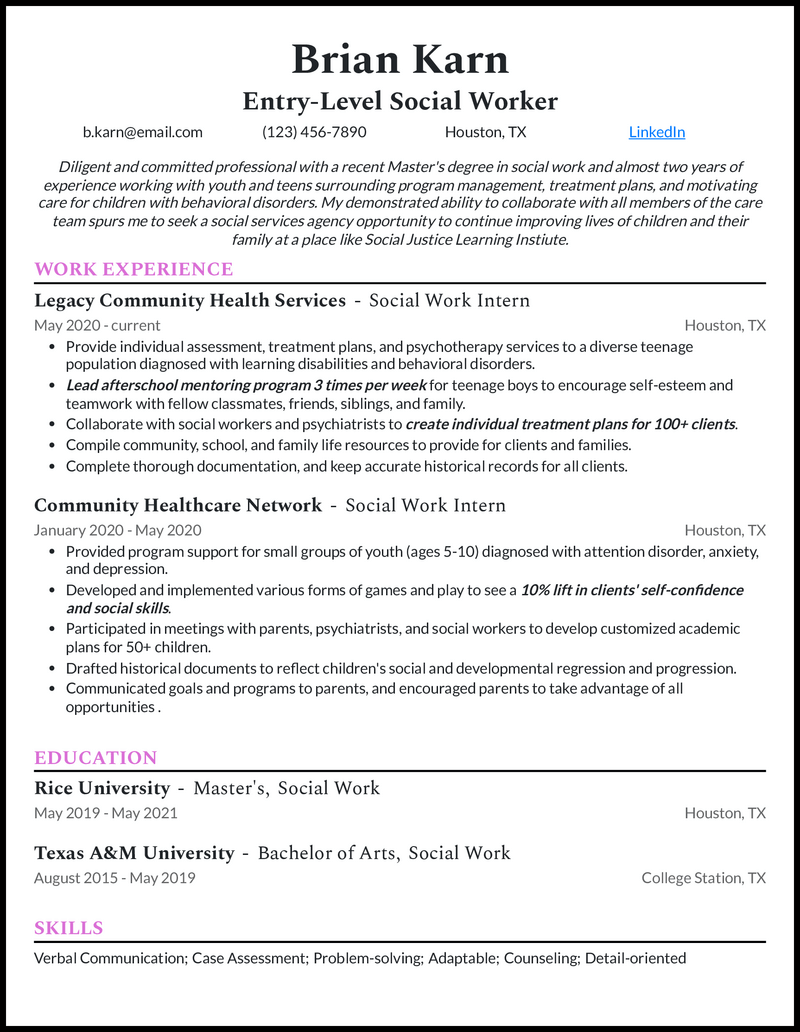
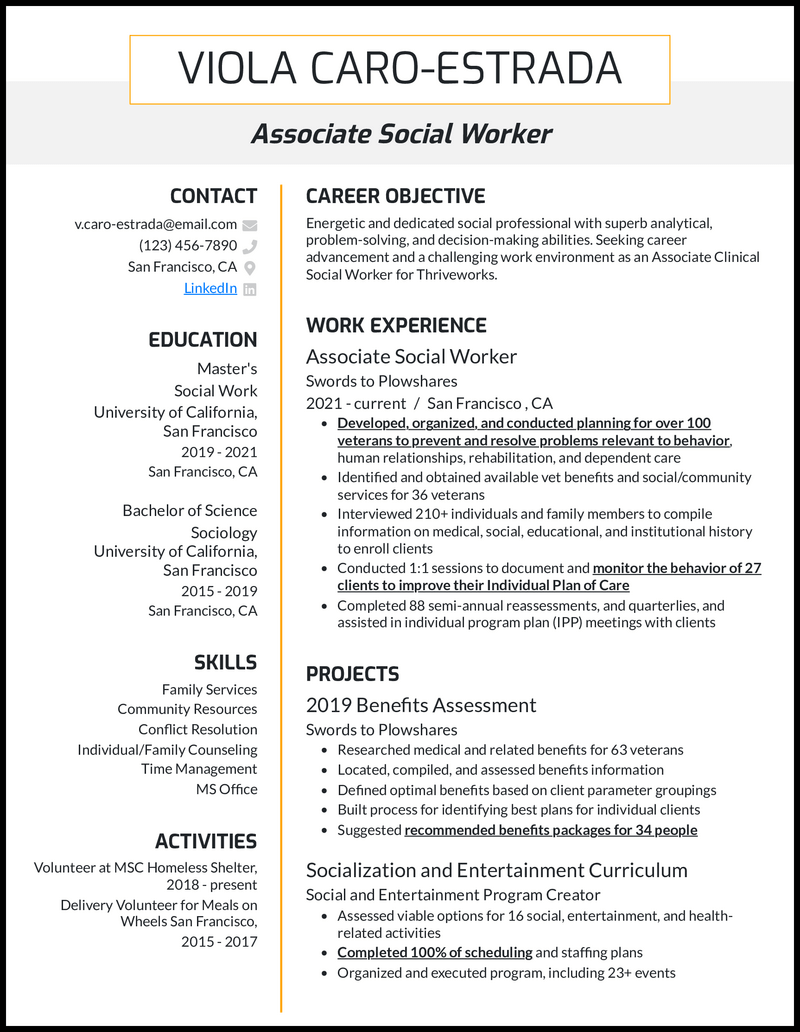


 example with 10+ years of experience" width="800" height="1032" />
example with 10+ years of experience" width="800" height="1032" />
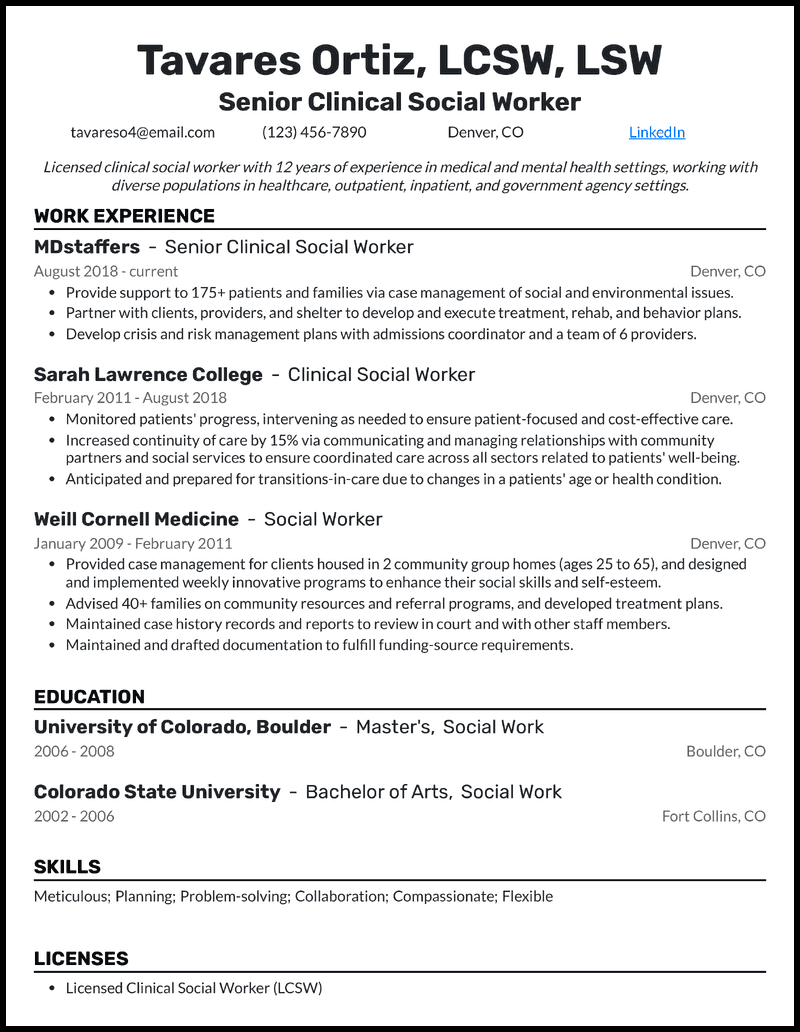 example with 10+ years of experience" width="800" height="1032" />
example with 10+ years of experience" width="800" height="1032" />
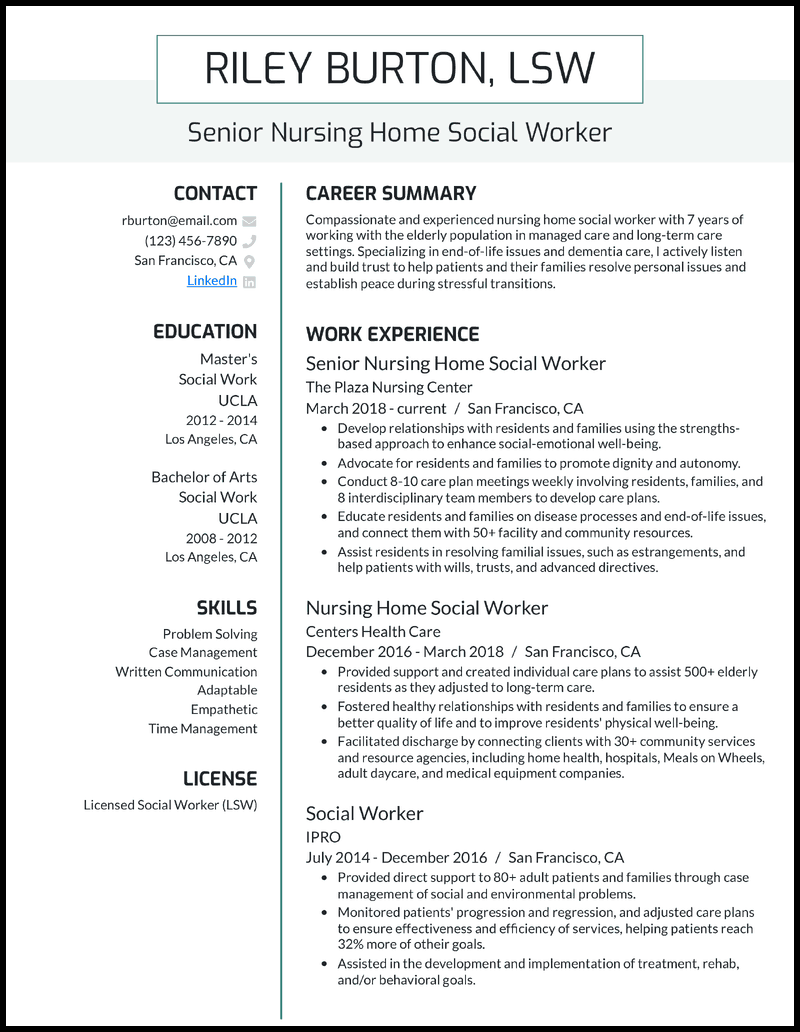
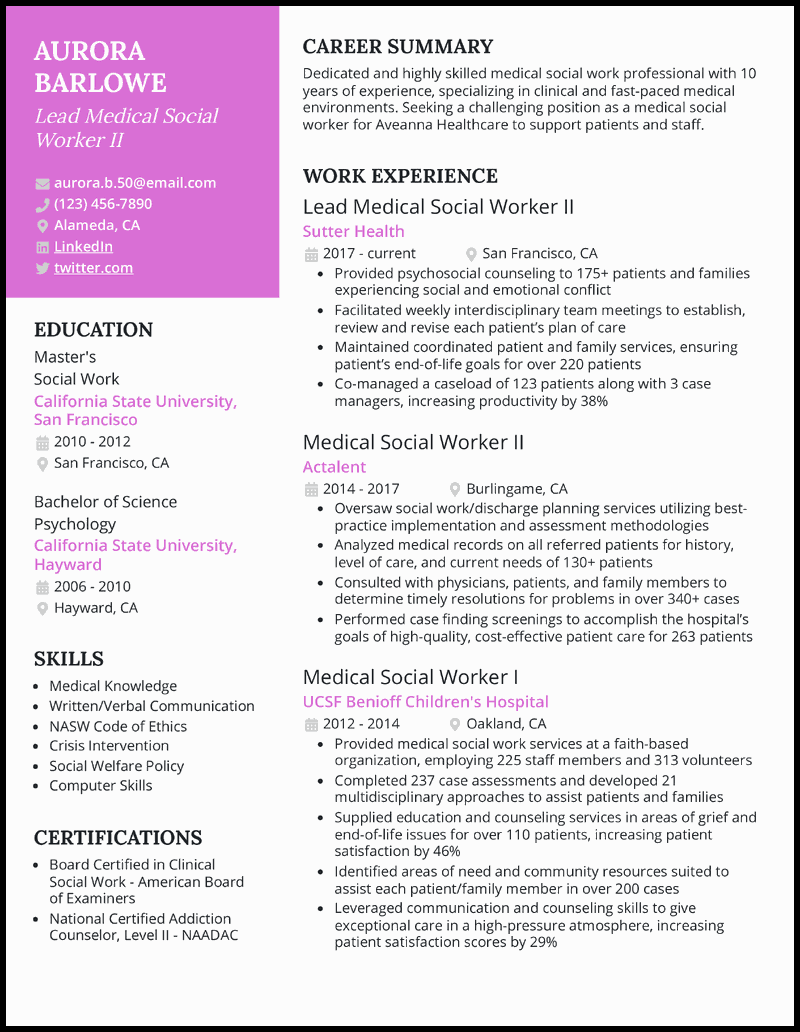 example with 10+ years of experience" width="800" height="1032" />
example with 10+ years of experience" width="800" height="1032" />

No one knows the demands of your job as well as you do. Working with people who often really need your help is no easy feat, which is why the list of job responsibilities in your field might seem endless. How do you pick the ones that your future employer cares about the most?
The answer is simple: follow the job description! Here are some of the most sought-after job responsibilities you’ll find when searching for a new social worker job.
![]()
![]()
There are several acceptable ways to present your professional experience like a narrative. Hiring managers accept the following resume formats:
Within the social work industry, recruiters respond best to the reverse-chronological format because it highlights the evolution of your career through progressive acquisition of skills and professional development.
![]()
Your social worker resume explains your qualifications and credentials for the job you’re seeking, but if recruiters don’t know how to contact you, nothing you write will matter. As a result, you need to write and format your contact header effectively. This section should include:
Notice the customized header that lists the job posting title below the name.

![]()
Applicant Tracking Systems (ATS) are computer programs that filter out low-quality, irrelevant, and unreadable resumes. However, they’re not infallible. Sometimes they toss out relevant resumes based on a lack of keywords. Adhering to a few simple conventions, which our AI resume builder helps with, will ensure you pass the inevitable ATS filter.
![]()
Social workers require licensure, soft skills, and clinical abilities to perform their jobs effectively. Presenting that breadth of experience in an easy-to-read and tight resume format can be challenging.
Luckily, you’re familiar with tricky situations. So, assess your experience and determine your desired job competencies to help you write an effective resume.
![]()
Resume objectives and resume summaries are optional, but they can be an eye-catching aspect of your social worker resume. If used effectively, they can be a deal-breaker that grants you an interview.
They should sell your value to the company within two to three sentences. This is the first section of the resume, so it must be compelling and informative to justify its inclusion.
Employers will notice you’ve taken the time to mention their company by name, as seen here.
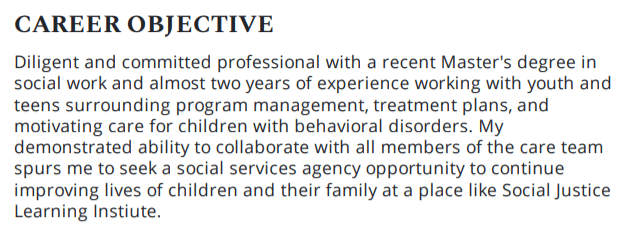
![]()
You should be comprehensive, but use space wisely. Generally speaking, focus on recent jobs relative to the work you’re seeking: limit your positions to the last two to four jobs you’ve held. This provides enough space to give substantive details about your accomplishments.
![]()
Each bullet point in your social worker resume tells the story of your experience and qualifications. To make sure your bullet points are effective and easy-to-read, choose active verbs that are specific to social work, use a consistent tense, and use sentence fragments without ending punctuation.
![]()
Recruiters value statistics because they’re tangible proof of your performance and accomplishments. However, quantifying results in social work is difficult, and it doesn’t always reflect the humanistic nature of the practice. So, include metrics and statistics when you can, but don’t stress about including them in every bullet point. A good rule of thumb is to have 60 percent of your bullet points include metrics.
![]()
Social work positions require very specific skill sets, like particular diagnoses, treatment methods, and clinical theories. Review the job description carefully to see what skills they need for the position and thus, what you should include on your resume. Use these terms throughout your social worker resume (when they’re applicable) to catch the eye of any recruiter.
Here’s a solid list of additional soft skills you might include:

![]()
Listing your education reverse-chronologically is the best way for recruiters to see your most recent level of experience. Depending on your highest level of education, the section will descend from Ph.D. to MSW to BSW.
Be sure to list any licensures, continuing education certifications, or specialized training, either in the education section or in a separate licenses/certifications section.
If you still need licensure, there are an array of licenses available to those entering the social work field. While license requirements vary by state, most require a bachelo’rs degree. Candidates can earn certifications as a licensed social worker (LSW), a licensed independent social worker (LISW), a licensed clinical social worker (LCSW), or a licensed independent clinical social worker (LICSW) in most states.
Each level requires more education and training, with the LSW being the least demanding and LICSWs being the most stringent and intensive.
Notice the easy-to-read reverse-chronological style highlighting an evolving education.

![]()
You should omit these optional sections unless you are a recent graduate or applying for an entry-level position. These sections provide color to your resume, but they’re generally considered excessive for higher-level positions. Highlighting and quantifying your professional accomplishments is far more important to recruiters.
If you choose to include hobbies on your resume, they should exhibit your suitability for the position. Social workers should also consider including relevant volunteer experience. If you’re applying for a school social work position, describing volunteer experience with a children’s literacy program would be more suitable than listing your participation in a food pantry.
![]()
Generic social worker resumes sent out for multiple jobs isn’t the way to go. Job postings are highly detailed and reflect the values and mission of their respective companies. As a result, you should tailor your resume directly to the open position.
Read job postings carefully to parse out the active verbs and terminology the recruiter will expect to see. You should check your social worker resume to ensure it mirrors their language and speaks directly to the company you wish to join.
![]()
Typos and grammatical errors can grab attention as much as an excellent objective statement or well-crafted bullet points. Always double-check your resume for grammar, punctuation, and spelling errors.
Ask relatives, friends, or classmates to review your social worker resume for misspellings, awkward phrasing, and punctuation errors.
![]()
A resume that addresses your potential employer’s desired skills is your best chance to land an interview for your new social work position. While using a resume maker, be sure to:
When you’re ready to submit your resume to potential employers, it’s time to start learning how to write a resignation letter to plan a smooth exit from your current role and launch into your dream job.